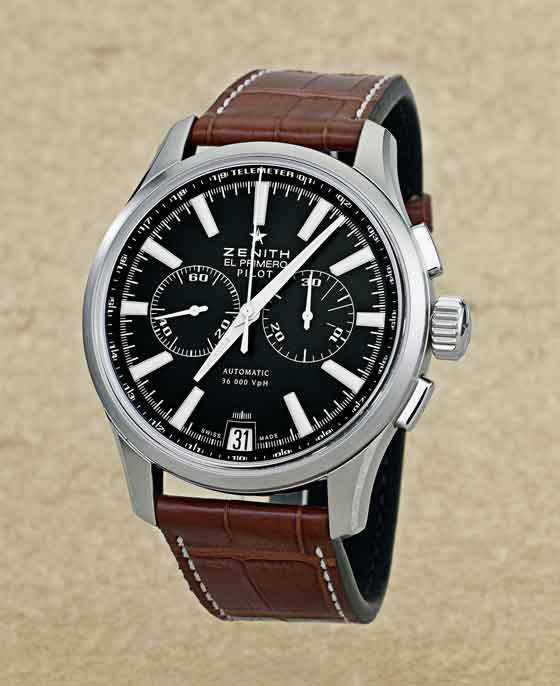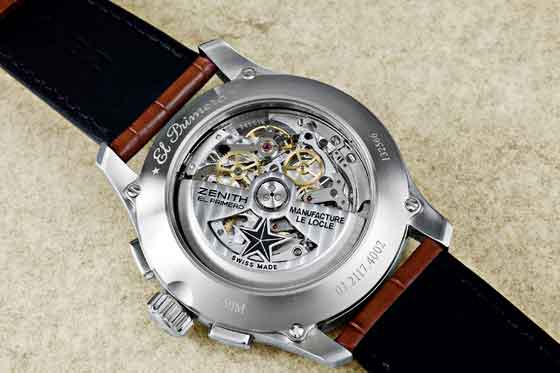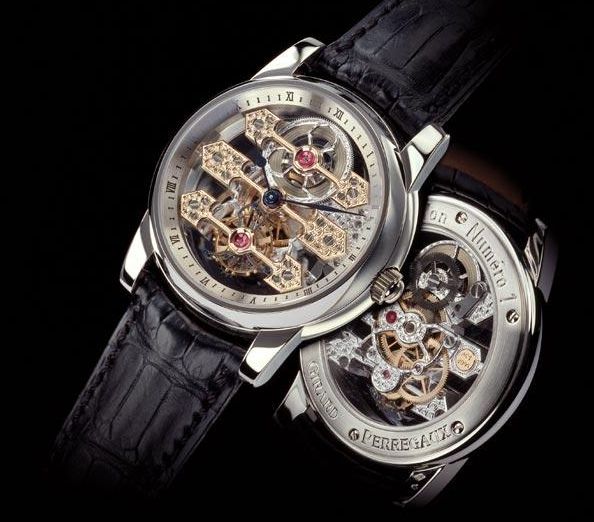Rolex Watches is a Swiss manufacturer of mostly mechanical
wristwatches renowned for their dependability, prestige, and cost (from a
few thousand to more than one hundred thousand U.S. dollars). Rolex
watches are considered status symbols by many. Rolex is the largest
single luxury watch brand by far, with estimated revenues of around US
$3 billion (2003). BusinessWeek magazine ranks Rolex 71st on its 2007
annual list of the 100 most important global brands, top among all
watchmakers.
Rolex History
Rolex SA was founded in
1905 by the German Hans Wilsdorf and his brother-in-law, Alfred Davis.
Contrary to popular belief, Hans Wilsdorf was neither Swiss, nor a
watchmaker. Wilsdorf & Davis was the original name of what later
became the Rolex Watch Company. They originally imported Hermann
Aegler's Swiss movements to England and placed them in quality cases
made by Dennison and others. These early wristwatches were then sold to
jewelers, who then put their own names on the dial. The earliest watches
from the firm of Wilsdorf and Davis are usually marked "W&D" -
inside the caseback only.
Hans Wilsdorf registered the trademark
name "Rolex" in La Chaux-de-Fonds, Switzerland in 1908. The origin of
the name is obscure. One story, which was never confirmed by Wilsdorf,
is that the word "Rolex" came from the French phrase horlogerie exquise,
meaning exquisite watch industry. Another is that the name was chosen
to indicate movement when spoken in English.
The Wilsdorf &
Davis company moved out of the United Kingdom in 1912. Wilsdorf wanted
his watches to be affordable, but taxes and export duties on the case
metals (silver and gold) were driving costs up. From that time to the
present, Rolex has been headquartered in Geneva, Switzerland, though the
company owns facilities in other cities (Bienne, etc) and continents
(North America, Asia, Australia, etc).
The company name Rolex was
officially registered on 15 November, 1915. It is thought this change
was part of a drive to popularize wristwatches, which at the time were
still considered a novelty largely for women (pocket watches were more
common). Wilsdorf was said to desire his watch brand's name to be easily
pronounceable in any language. The company name was officially changed
to the Rolex Watch Company during 1919. It was later changed to Montres
Rolex, SA and finally Rolex, SA.
Rolex SA is a foundation
initiated and originally funded by Hans Wilsdorf and the Aegler family.
According to foundation documentation, the Rolex SA company can never be
sold, nor traded on any stock market.
Other Rolex Innovations
Among
the company's innovations are the first waterproof watch case; the
first wristwatch with a date on the dial; the first watch to show two
timezones at once; and most importantly the first watchmakers to earn
the coveted chronometer certification for a wristwatch. To date, Rolex
still holds the record for the most certified chronometer movements in
the category of wristwatches.
Another little known fact is that
Rolex participated in the development of the original quartz watch
movements. Although Rolex has made very few quartz models for its Oyster
line, the company's engineers were instrumental in design and
implementation of the technology during the late 1960s and early 1970s.
In 1968, Rolex collaborated with a consortium of 16 Swiss watch
manufacturers to develop the Beta 21 quartz movement used in their Rolex
Quartz Date 5100. Consequently, after five years of research, design,
and development, Rolex engineering efforts finally culminated in the
"clean-slate" 5035/5055 movement that would eventually power the Rolex
Oysterquartz - arguably the finest quartz movement that has ever been
made.
The first self-winding Rolex watch was offered to the public
in 1931, preceded to the market by Harwood which patented the design in
1923 and produced the first self-winding watch in 1928, powered by an
internal mechanism that used the movement of the wearer's arm. This not
only made watch-winding unnecessary, but eliminated the problem of
over-winding a watch and harming its mechanism. Rolex was also the first
watch company to create a truly waterproof watch - another milestone
from novelty to functional timepiece. Wilsdorf even went so far as to
have a specially made Rolex watch attached to the side of the Trieste
bathyscaphe, which went to the bottom of the Mariana Trench. The watch
survived and tested as having kept perfect time during its descent and
ascent. This was confirmed by a telegram sent to Rolex the following day
saying "Am happy to confirm that even at 11,000 meters your watch is as
precise as on the surface. Best regards, Jacques Piccard".
Rolex
has also made a reputation in watches suitable for the extremes of
deep-sea diving, aviation and mountain climbing. Early sports models
included the Rolex submariner, Oyster Perpetual Sea Dweller 2000 (in
1971). This watch featured a helium release valve, co-invented with
Swiss watchmaker Doxa, to release helium gas build-up during
decompression. Another sports model is the Rolex GMT Master II,
originally developed at the request of Pan Am Airways, to assist pilots
in transcontinental flights. The Explorer and Explorer II were developed
specifically for explorers who would navigate rough terrain - such as
the world famous Everest Expeditions.
On the more glamorous side, Ian Fleming's James Bond character wore a
Rolex Oyster Perpetual in the series of spy novels. In the early EON production Bond films, Commander Bond wore a
Rolex Submariner. However, for the Bond films starring Pierce Brosnan and the film with Daniel Craig, James Bond's standard issue watch is a
Omega Seamaster. This is due in part to
Omega being open to jointly promote their association with the films' producers.
In
a famous murder case, the Rolex watch that the victim wore on his wrist
eventually led to the arrest of his murderer. When a body was found in
the English channel in 1996 by a fisherman who caught the body, and the
4.5 kilogram anchor attached to it through the victim's belt, in his net
about 10 kilometers from the English coast, a Rolex wristwatch was the
only identifiable object on the body. Since the Rolex movement had a
serial number and was engraved with special markings every time it was
serviced, British police traced the service records from Rolex, and
Ronald Joseph Platt was identified as the owner of the watch and the
victim of the murder. In addition British police were able to determine
the date of death by examining the date on the watch calendar and since
the Rolex movement had a reserve of two to three days of operation when
inactive and it was fully waterproof, they were able to determine the
time of death within a small margin of error.
Rolex Watch models
Rolex SA has three watch lines: Oyster Perpetual, Professional and Cellini. Among modern Rolex Oyster watch models are the:
o Air-King
o Date
o Milgauss
o Datejust
o GMT Master II
o Explorer
o Explorer II
o Submariner
o Sea-Dweller
o Daytona Cosmograph
o Day-Date
o Oyster Perpetual
o Yacht-Master
o Yacht-Master II
o President
The stainless steel
Rolex Daytona
has become one of the most sought after watches of all time. Dealer
waiting lists can run from three to seven years and there are reports of
collectors paying up to $15,000 for the privilege of owning this
exclusive watch, though it is not uncommon for jewellers to rake up the
profits themselves by buying the watches and selling it on, hence it is
rumored that Rolex has dropped the infamous waiting list.
The primary bracelets for the
Rolex Oyster
line are named Jubilee, Oyster and the President. Rolex "dressy"
watches are from their Cellini line. The third brand in the Rolex family
is the less expensive, but high quality, Tudor brand. It was
established by Rolex founder, Hans Wilsdorf, in 1946. While still sold
in Europe and the Far East, the Tudor line was discontinued in the
United States as of 2004.
Rolex is the largest manufacturer of
Swiss made certified chronometers. In 2005 more than half the annual
production of COSC certified watches were Rolex.
Rolex counterfeits
Like
many high-priced, brand-name watches, Rolex watches are one of the most
counterfeited brands of watches available and can be found illegally
being sold on the street and the internet. These fake Rolex watches are
mainly produced in Asian countries such as India and mainland China (EU
figures show that 54% of fakes seized in 2004 originated in China), and
retail anywhere from $5 upwards to $1000 for high-end Rolex replica
watches fabricated in gold. By some accounts, over 75% of all replica
watches produced annually are copies of Rolex Oyster Perpetual designs.
These fake watches have been nicknamed "Folex" or "Fauxlex", or "Trolex"
in Spain (trola means fake in Spanish).
 SPECS:
SPECS:































